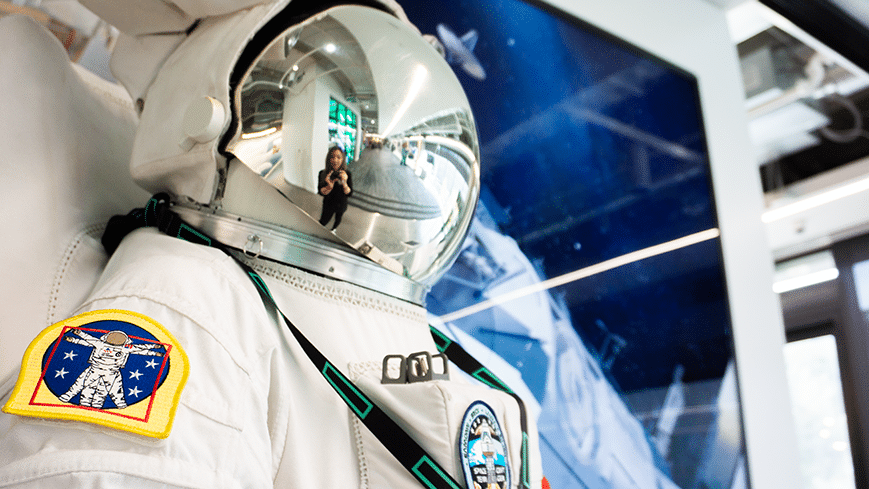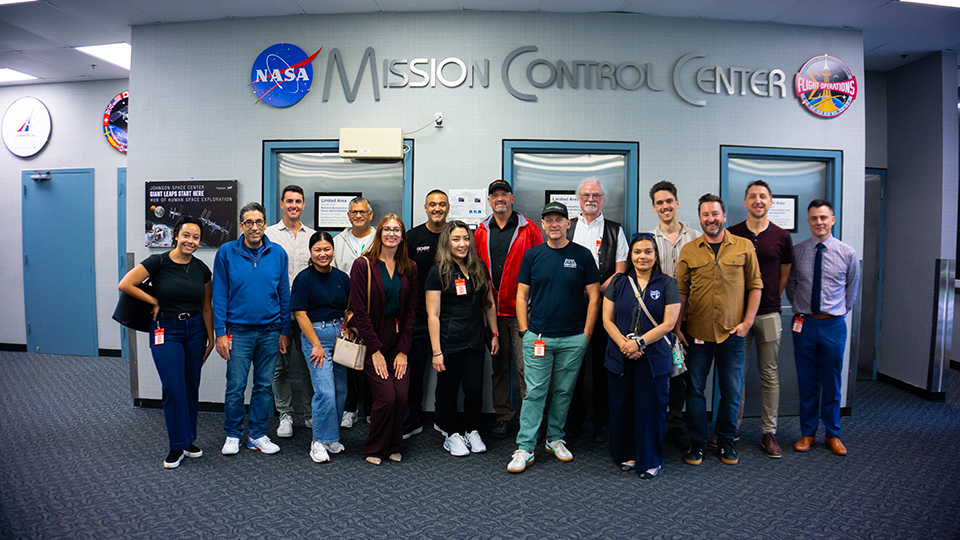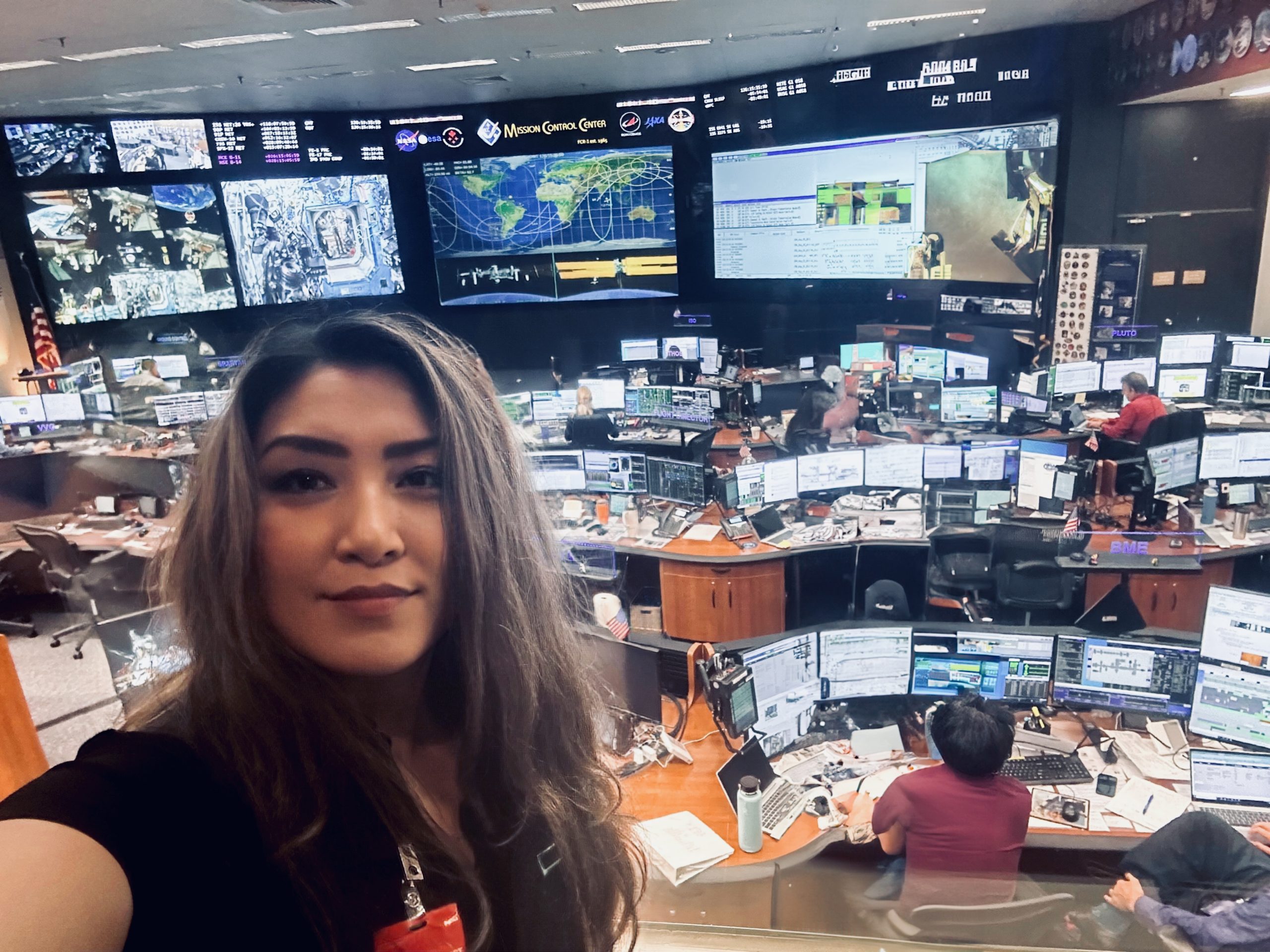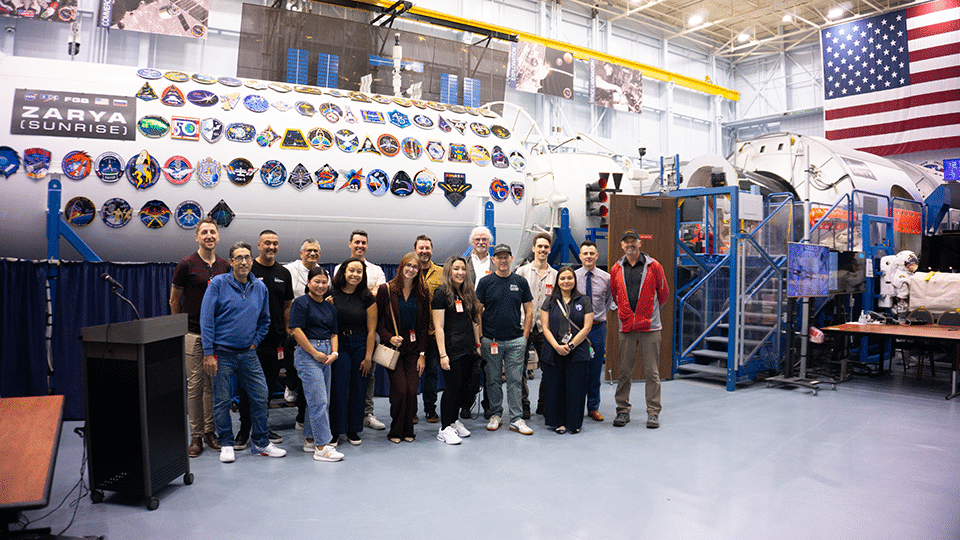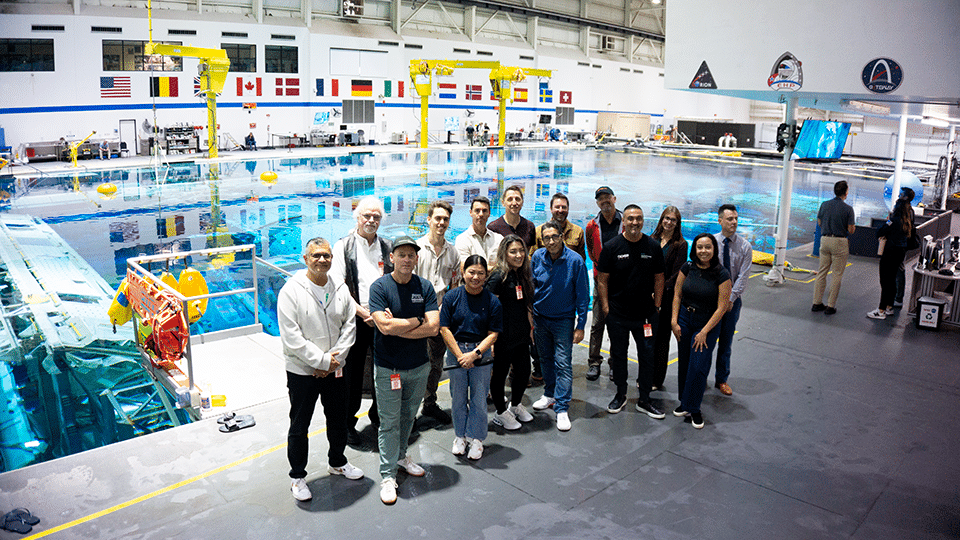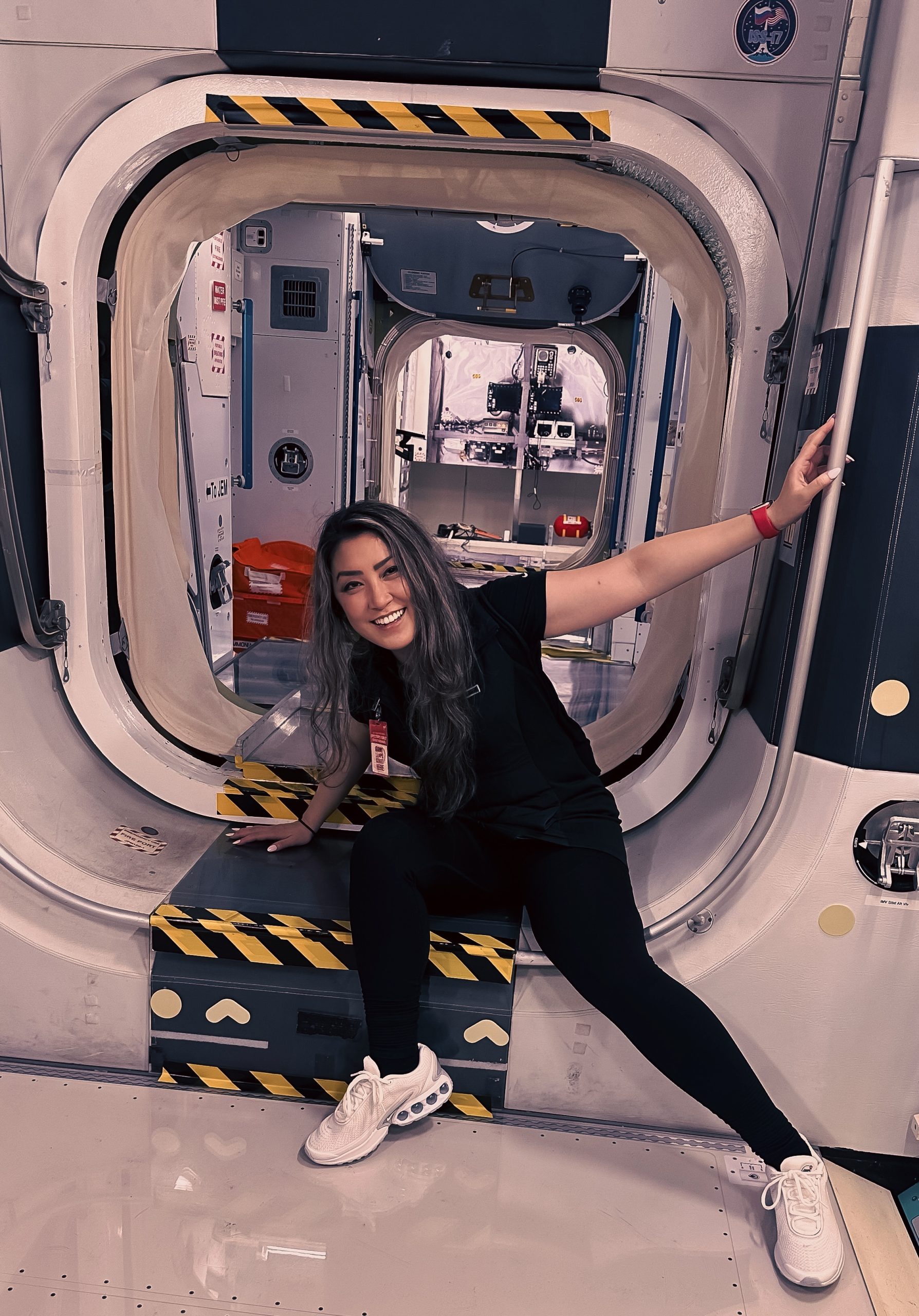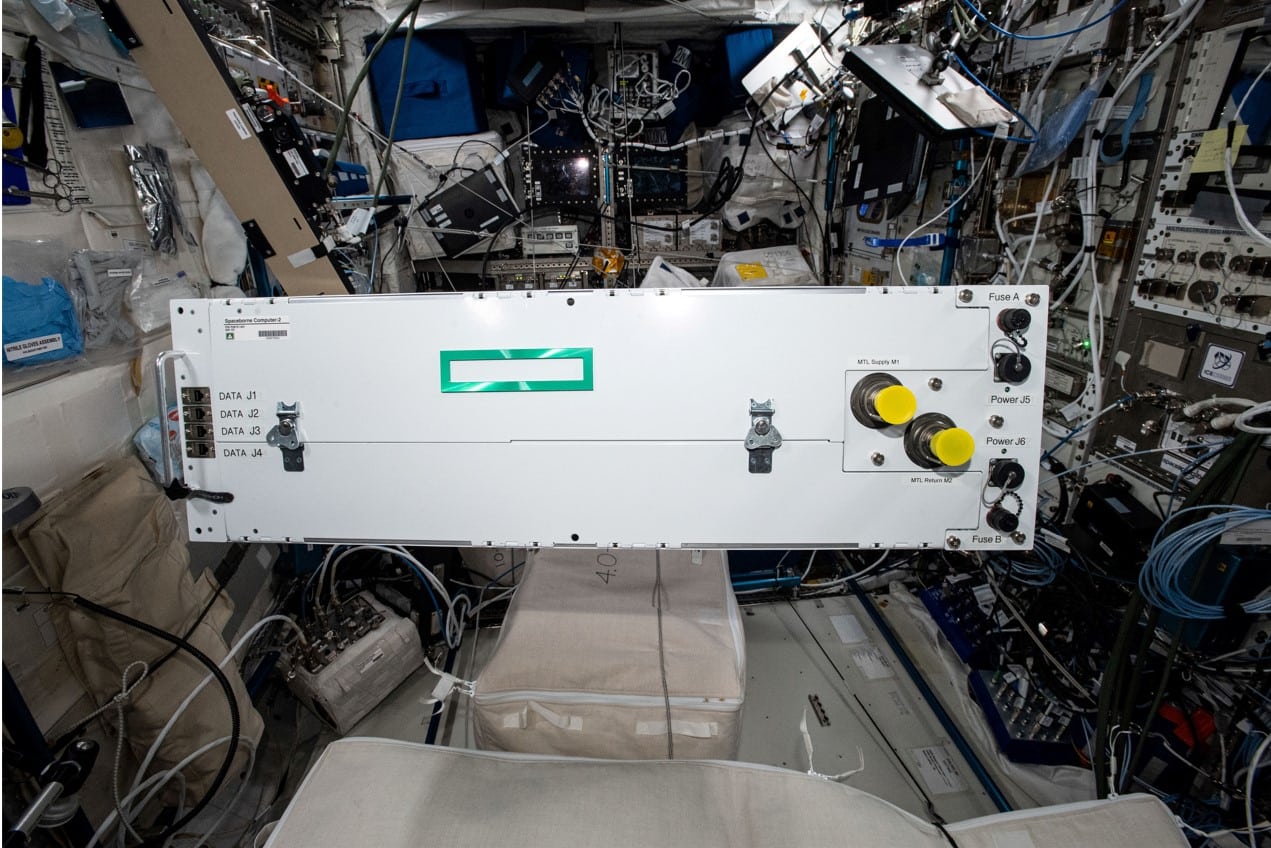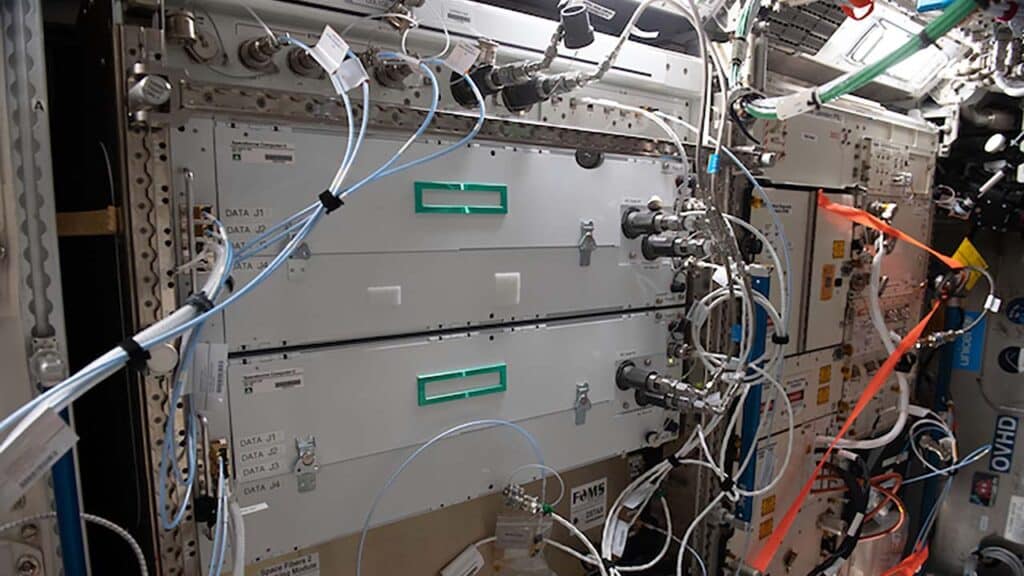From Earth to Orbit: My Invitation to NASA’s Ultra-Rare VIP Tour
Most people know NASA as the place where rockets launch, astronauts train, and history is made. But what they don’t see is the side that only a few are ever invited to witness — the NASA VIP Tour, an experience reserved for Presidents, astronauts, heads of state, key contributors to space exploration, celebrities and dignitaries. I was honoured to be one of them.
Why I Was Invited
This extraordinary invitation was extended in recognition Champions of Change, and our growing relationship Dicker Data in concert with Hewlett Packard Enterprise (HPE). HPE is a long-standing strategic partner to NASA. HPE being part of the ecosystem of collaborators advancing critical space technologies, their work was acknowledged as contributing to the future of space exploration.
The invitation by Dicker Data & HPE | Rocket to the Big Apple also reflected the strength of our broader technology partnerships. Highlighting Dicker Data, a key Australian distributor helping bridge local innovation with global impact.
Spacesuit Exhibit at the HPE Customer Experience Centre
A powerful reflection of innovation and aspiration — the spacesuit on display captures the spirit of human space exploration, mirrored alongside Xara Tran, Founder and CEO of Champions of Change. This moment symbolizes the synergy between cutting-edge technology and visionary leadership driving NASA’s missions forward.
Photo: Supplied / Champions of Change
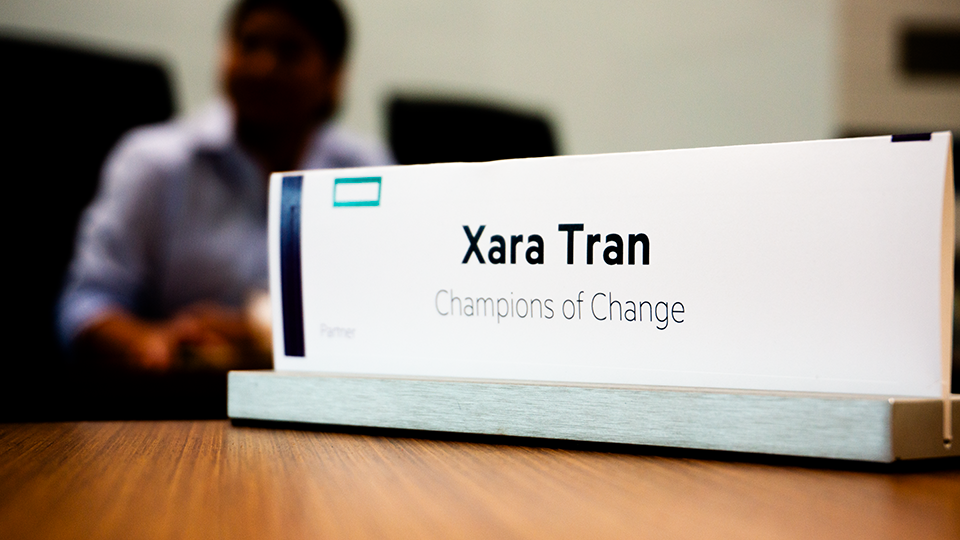
Captured during a briefing session at Hewlett Packard Enterprise (HPE), highlighting the close collaboration between Champions of Change and HPE in the recent advancement of space exploration technologies.
Photo: Supplied / Champions of Change
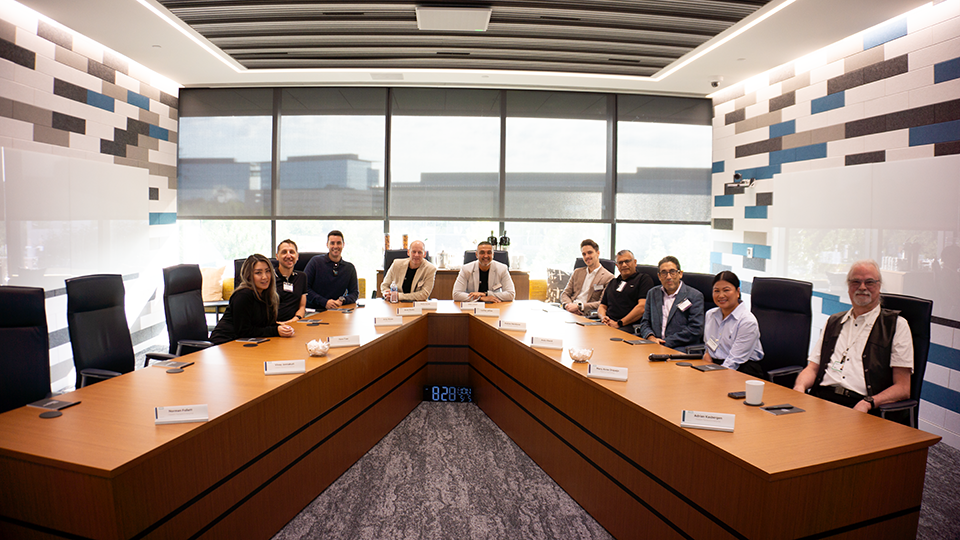
Photo: Supplied / Champions of Change
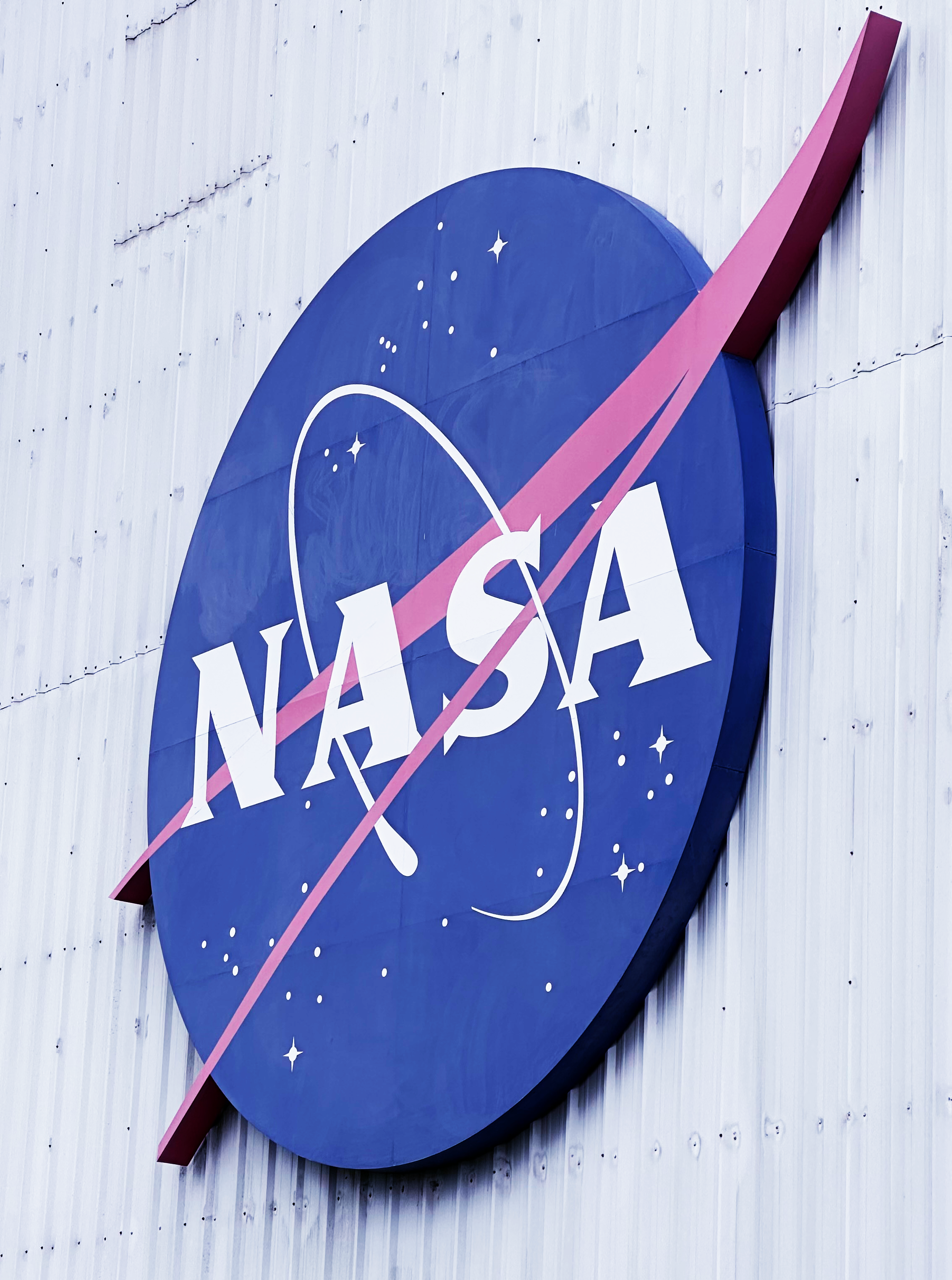
Photo: Supplied / Champions of Change
How Rare Is This?
The short answer: incredibly rare. Fewer than 0.1% of the general public will ever receive this kind of access. VIP tours at NASA are not open for application or purchase. They’re extended by invitation only, typically to:
– Government leaders and dignitaries
– Aerospace and mission-critical partners
– Select scientists and educators
– A-list celebrities promoting science literacy
To put that in perspective:
Considering our location in Australia and the rarity of being a woman founder in technology, the estimated odds of receiving a NASA VIP tour invitation drop to just 0.0021%, I did the math.
What Sets the NASA VIP Tour Apart?
Unlike public NASA tours, VIP guests are taken behind the scenes into the very core of spaceflight operations. We saw restricted areas, observed live astronaut training, and stepped inside full-scale mission environments used by NASA and international partners.
Entrance to NASA’s Mission Control Center – “Where the Impossible Becomes Routine”
Standing before the iconic doors of Mission Control at Johnson Space Center, the threshold to one of the most pivotal rooms in human spaceflight history. Inside, flight controllers have guided every U.S. crewed space mission since Gemini IV — including the legendary Apollo Moon landings and today’s ISS operations.
Photo: Supplied / Champions of Change
Inside NASA’s Mission Control Center – Johnson Space Center, Houston
A rare glimpse into the active Flight Control Room where NASA engineers monitor real-time operations aboard the International Space Station. This is the nerve center of human spaceflight, where split-second decisions impact the lives of astronauts and the success of missions.
Photo: Supplied / Champions of Change
Johnson Space Center – Key Access Points
Mission Control Center (MCC) – Heart of Space Operations
– Historic Apollo Control Room: Preserved down to 1960s ashtrays and consoles — this is where the Moon landing was coordinated.
– Active ISS Flight Control Room: We watched live data streams and listened in on mission coordination with the crew aboard the International Space Station (ISS).
– Training Rooms & Sim Labs: Simulations here prepare astronauts and engineers for every possible emergency.
– Comms Center: Maintains critical links via the Deep Space Network and TDRSS satellites.
VIP Delegation at NASA’s Astronaut Training Facility – Space Vehicle Mockup Facility (SVMF), Johnson Space Center. Pictured in front of the Zarya (Sunrise) mockup module, a select group of global visitors — including Champions of Change — toured NASA’s elite astronaut training floor. This behind-the-scenes access offered firsthand insight into international collaboration aboard the ISS and the physical preparation astronauts undergo before launch.
Photo: Supplied / Champions of Change
Astronaut Training Facility – Building 9
A sprawling complex housing full-scale mockups of:
– The International Space Station (ISS)
– The Orion spacecraft
– Future lunar/Mars modules
We walked the same corridors as astronauts in training, learning how they prepare for life and science in space.
Neutral Buoyancy Laboratory (NBL) – Sonny Carter Training Facility
The 6.2-million-gallon (≈23.5 million litres) indoor pool where astronauts train for spacewalks in simulated microgravity conditions. During our visit, we observed real-time exercises and met NASA’s youngest female astronaut recruit preparing for future missions.
Photo: Supplied / Champions of Change
Neutral Buoyancy Laboratory (NBL)
A 6.2-million-gallon (approx. 23.5 million litres) indoor pool where astronauts simulate spacewalks in full EVA suits. This was where we saw real-time training exercises underway — floating, tilting, and manoeuvring through artificial zero-gravity conditions.
To our awe, we also observed NASA’s youngest newly recruited female astronaut undergoing training — a powerful reminder of the next generation stepping into humanity’s most ambitious missions. Watching her prepare for spacewalk simulations was both humbling and inspiring, especially for those of us who once dreamed of being in her place. In particular it was fascinating during the training session observing communications of better ways to manage the cable structures for the walk.
Regardless, this is one of the most impressive scenes I was able to witness.
Founder and CEO of Champions of Change IT Inside the Japanese Experiment Module “Kibo”
A rare and privileged moment inside Kibo — the largest science module on the International Space Station — experienced by fewer than 0.1% of NASA visitors, with most never stepping inside. The Founder and CEO of Champions of Change IT explored astronaut training areas where microgravity experiments in plant biology, materials science, and life support are simulated. The tour reflected an extraordinary collaboration between NASA and JAXA, and underscored how international partnerships are pushing the boundaries of space research.
Photo: Supplied / Champions of Change
Inside “Kibo” – The Japanese Experiment Module (JEM)
One of the most exclusive parts of the tour was stepping inside Kibo (“hope”), developed by JAXA. Kibo is the largest single module on the ISS, and its full-scale mockup is used by astronauts to train for onboard scientific research.
Plant Science in Space
Kibo is central to cutting-edge biological research. One highlight was the discussion of how astronauts grow plants as both a hobby and a scientific pursuit.
– Plants in Space: We learned that plants grown aboard the ISS experience stress conditions, especially due to the absence of gravity that roots rely on for orientation and nutrient uptake.
– The Goal: Scientists are developing ways to create thriving growth environments in microgravity — not only to sustain life on long-duration missions but also to support the mental well-being of astronauts.
– JAXA’s Role: The collaboration between NASA and JAXA embodies a powerful model of multilingual, multinational scientific unity.
This access is so rare that even most technical tours don’t include Kibo.
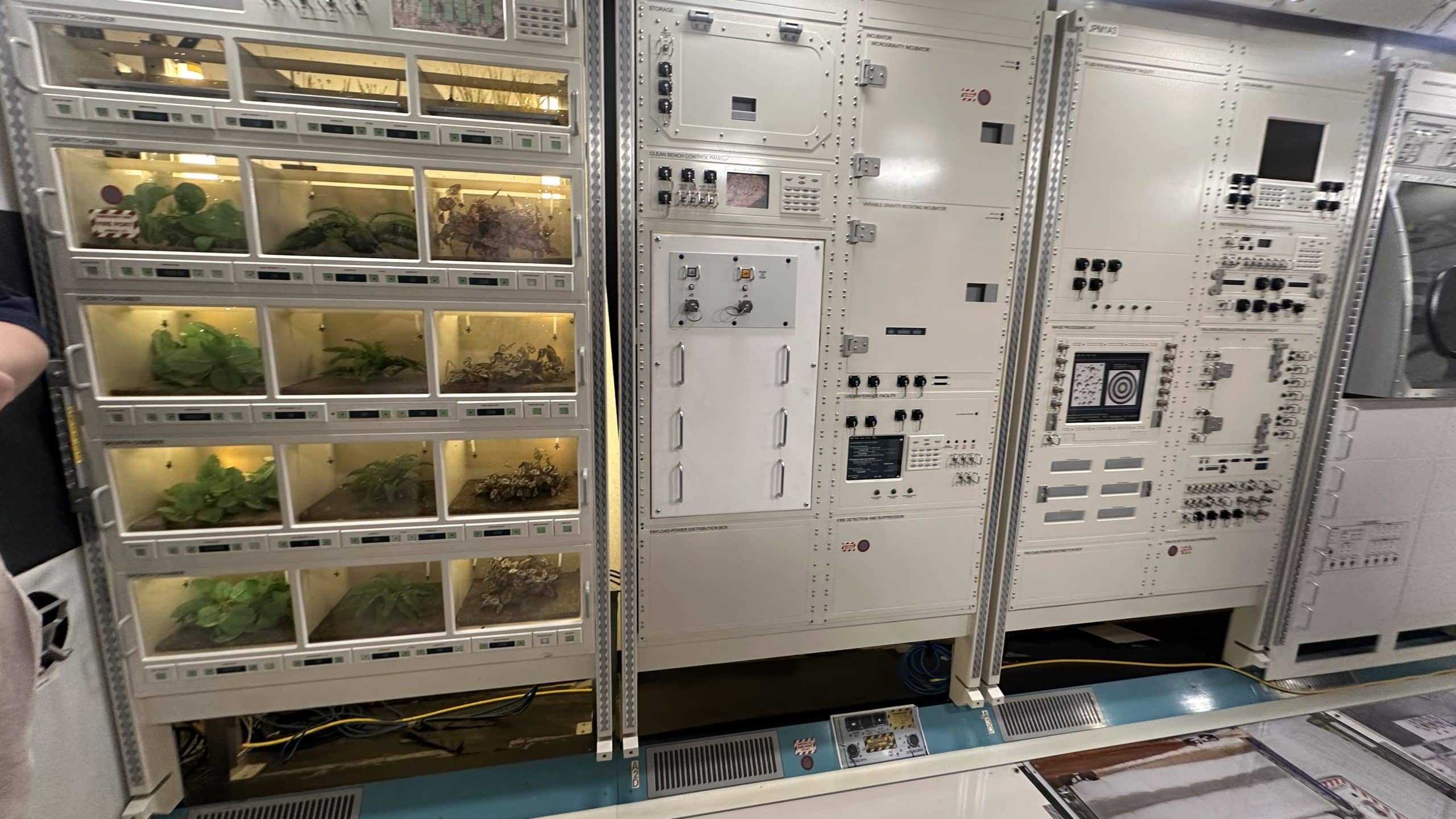
Peering through the miniature observation windows of the Japanese Experiment Module “Kibo,” where astronauts conduct groundbreaking research on growing plants in microgravity. These compartments simulate Earth-like conditions to study how plants respond to stress without gravity — work that could one day sustain life on the Moon, Mars, or beyond.
Photo: Supplied / Champions of Change
HPE and NASA: Powering NASA’s Missions from Orbit to the Moon
We learnt in great detail about Hewlett Packard Enterprise (HPE) and how it plays a pivotal role in enabling NASA’s space ambitions through powerful, purpose-built computing solutions. From the International Space Station (ISS) to future Moon missions, HPE’s contributions continue to shape the future of space exploration — and as a partner to HPE, it was an honour for Champions of Change to be invited to witness firsthand the legacy of innovation that HPE has built in space exploration. Learning directly from the HPE Spaceborne Computer team,in addition to the NASA aerospace engineers — the minds behind some of the most cutting-edge advancements orbiting Earth — was nothing short of inspiring.
Spaceborne Computer Program
Hewlett Packard Enterprise’s Spaceborne Computer-2 aboard the International Space Station — the first commercial edge computing system in space, enabling real-time data processing and AI workloads in orbit. This marks a major leap toward autonomous space missions and advanced scientific research beyond Earth.
Photo: Supplied / Hewlett Packard Enterprise
Spaceborne Computer-1
Deployed commercial off-the-shelf (COTS) servers to the ISS to test durability and real-time processing under space conditions.
Hewlett Packard Enterprise’s Spaceborne Computer-2 aboard the International Space Station — the first commercial edge computing system in space, enabling real-time data processing and AI workloads in orbit. This marks a major leap toward autonomous space missions and advanced scientific research beyond Earth.
Photo: Supplied / Hewlett Packard Enterprise
Spaceborne Computer-2 (2021)
– The first AI-enabled high-performance computing system in space.
– Completed 24 experiments, reducing data analysis from months to minutes.
Spaceborne Computer-3 (2024)
– Launched aboard a Northrop Grumman mission.
– Offers AI, ML, and edge computing to the global research community — a massive leap for onboard space processing.
AI & Machine Learning in Orbit
In 2022, HPE, NASA, and Microsoft tested AI onboard the ISS to detect damage to astronaut suits and equipment. This advancement in real-time diagnostics improves safety, autonomy, and maintenance in extreme environments.
Future Missions: The Moon and Beyond
HPE plans to integrate its next-generation computing system into the Astrolab FLEX Lunar Rover as part of the Artemis program. This will allow astronauts to process data directly on the Moon — a crucial leap for sustainable lunar habitation.
Other Famous Visitors
You’re in rare company when you step through NASA’s doors as a VIP. Others who’ve experienced customised behind-the-scenes access include:
– Barack Obama – Toured Kennedy Space Center and met astronauts during his presidency.
– Tom Cruise – Prepared for a film with full astronaut simulations.
– Leonardo DiCaprio & Beyoncé – Engaged in space advocacy and youth science education.
– Elon Musk – Receives ongoing access via SpaceX collaborations.
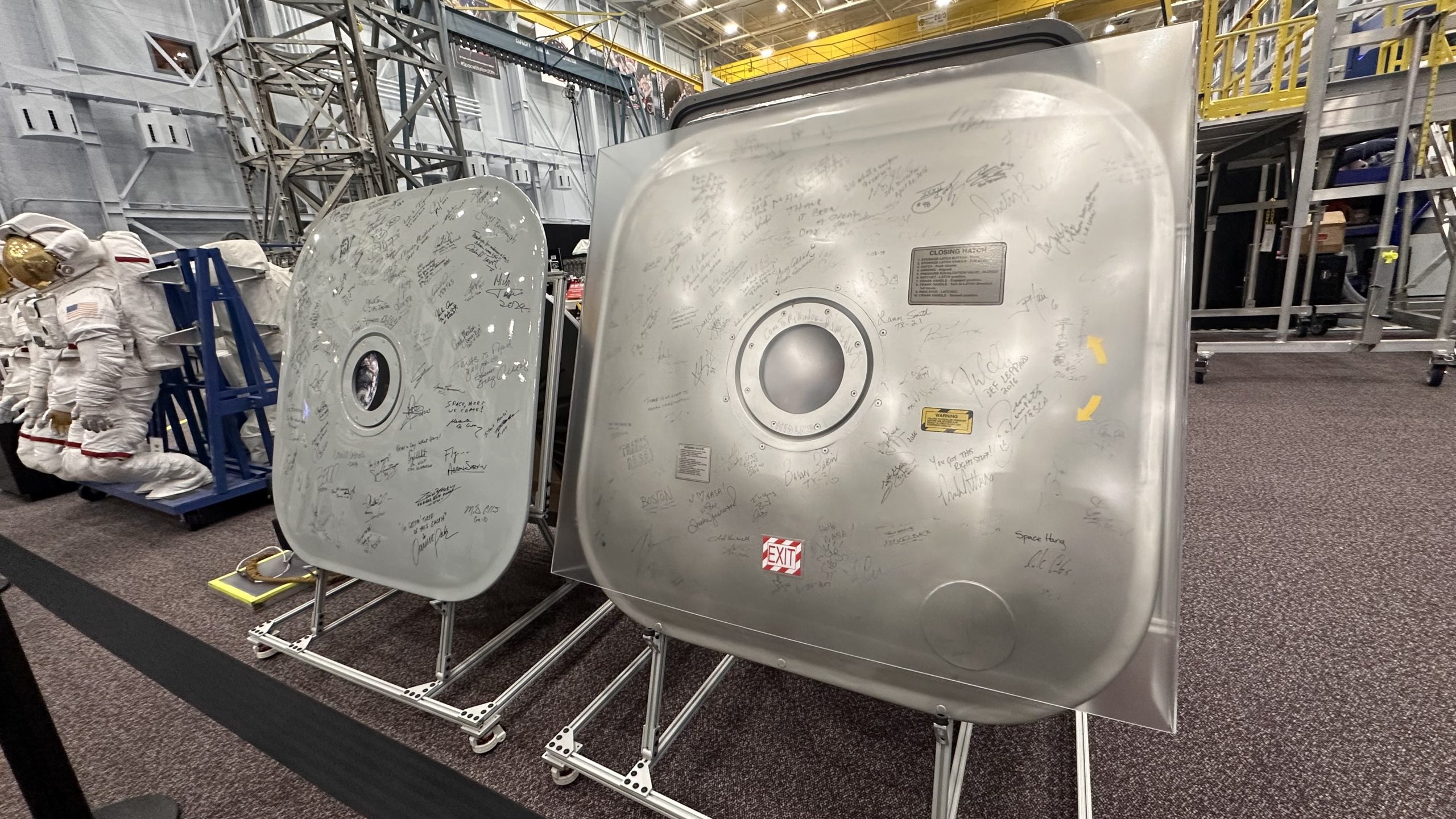
Photo: Supplied / Champions of Change
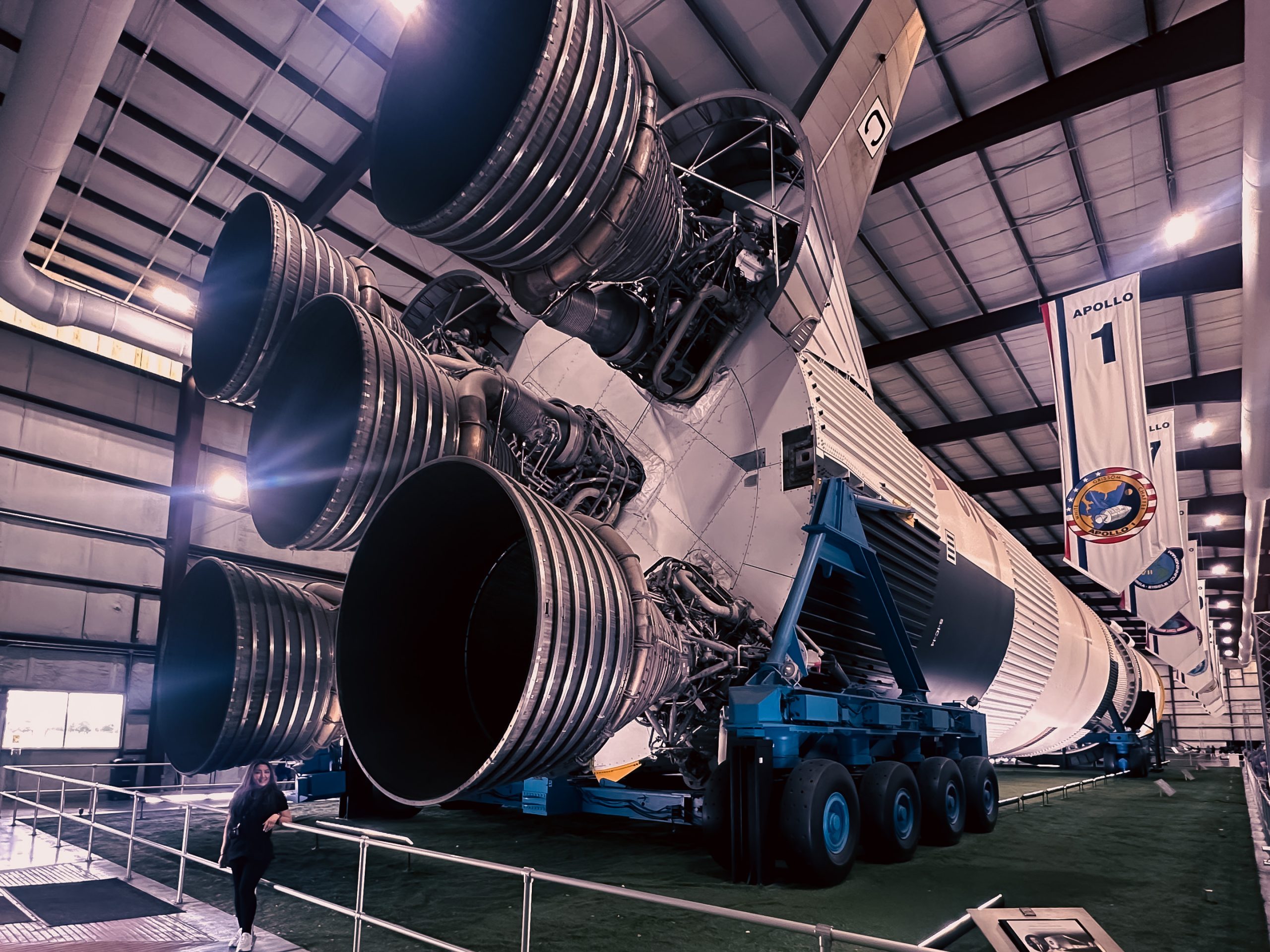
Photo: Supplied / Champions of Change.
A Personal Connection to the Stars
During the tour, I had the incredible opportunity to meet Norm Follett, a key figure behind HPE’s space collaborations. Norm Follett authored a powerful article in ISS Magazine about the Spaceborne Computer, and I had the pleasure of asking him to sign it to add to my collection of desk memories.
As a woman who once had her eyes set on becoming an aerospace engineer, this moment was profoundly meaningful. In university, I chose to walk away from that dream — trading my ambitions in aerospace for a more stable path in technology and business. It was a practical decision, one driven by the need for financial security. But the passion never truly left.
Returning to the dreams of my younger self, in a place where science, technology, and space converge, was deeply humbling. It felt like my past and present careers collided — not unlike a rogue asteroid meeting a perfectly calculated orbital trajectory. (Talk about a career with impact!)
Norm’s signature on that article wasn’t just ink on paper — it was a symbol. A reminder that dreams, when given space and time, can still find their way back into orbit. That moment was the closest I’d ever come to reaching the stars — and proof that even the most divergent career paths can gravitationally pull us back toward what we love.
Final Thoughts
The NASA VIP tour isn’t just about seeing rockets or walking where legends have walked. It’s about understanding the human ingenuity that keeps those rockets aloft — and the global collaboration that makes it all possible.
As a woman of colour and a first-generation Australian from a marginalised background, I stood in those historic rooms not merely as a visitor, but as a testament to what is possible when compassion, intellect, and courage converge — embodying the very best of what human ingenuity can offer humanity.
At Champions of Change, we’re proud to be part of that story — alongside our partners at HPE and Dicker Data — and we remain committed to building a future that’s inclusive, imaginative, and just a little more out of this world.
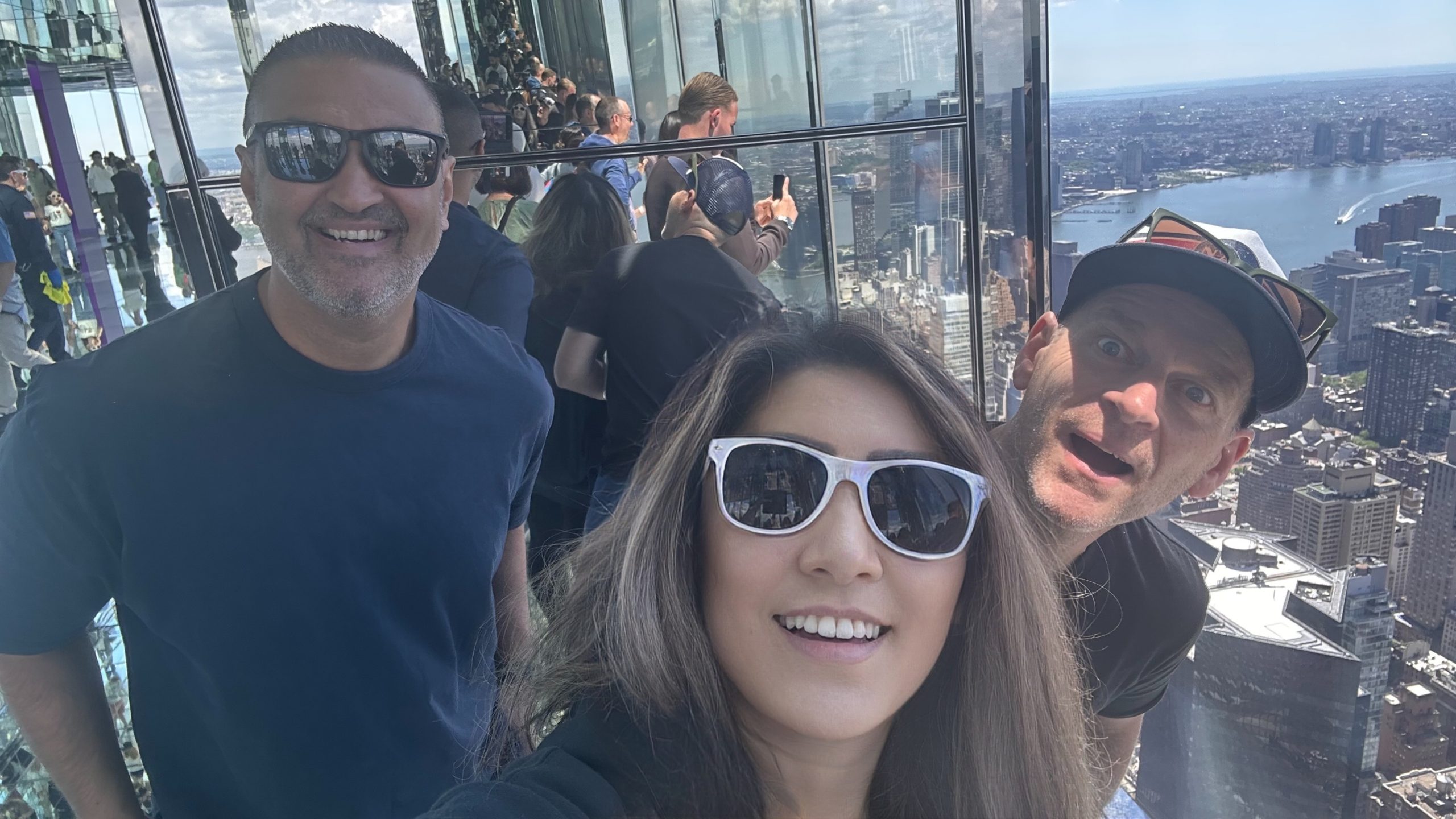
Photo: Supplied / Champions of Change
Special Thanks
I would like to extend my heartfelt appreciation to two exceptional professionals, Ishan Limaye and Justin Farrow from Dicker Data, who were there for me at the inception of Champions of Change. From the very beginning, they recognised the potential in an emerging organisation and stood by me through more than nine extraordinary years of growth and transformation.
This acknowledgment is not only a tribute of deep gratitude but a reflection of the life-changing impact your early belief and support have had — honoured both in words and in the meaningful work we continue to build together.
Written by: Xara Tran
Founder & CEO, Champions of Change Pty Ltd
Date: 14/15/2025
This NASA VIP tour was made possible through the generous support of Dicker Data, a valued HPE distributor, in concert with HPE’s Market Development Program. The visit was extended in recognition of Champions of Change’s contributions to the HPE ecosystem. The views expressed in this article are solely those of the author and do not reflect any endorsement by NASA.
